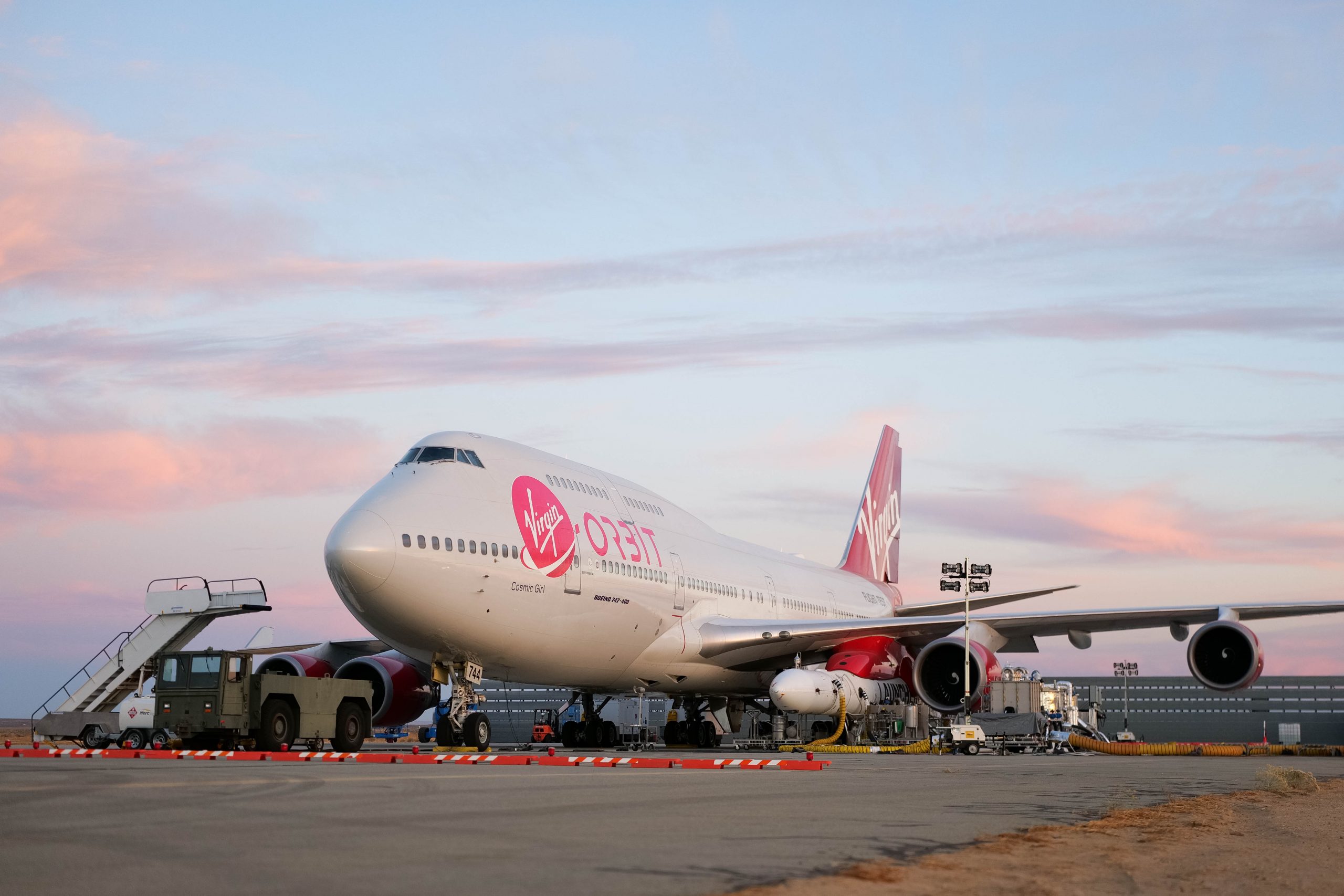
Virgin Orbit’s Cosmic Girl aircraft and LauncherOne rocket are positioned for takeoff from the Mojave Air and Space Port in California, in preparation to launch 10 small NASA-sponsored research satellites, or CubeSats, as part of the agency’s 20th Educational Launch of Nanosatellites (ELaNa) mission.
Cosmic Girl carries the LauncherOne rocket on the underside of the 747-aircraft’s left wing. When Cosmic Girl reaches its specified altitude over the Pacific Ocean, LauncherOne will be released for a controlled drop until the rocket’s NewtonThree first stage engine ignites to start the launch sequence that will send the satellites into low-Earth orbit. The mission has a three-hour launch window from 1 p.m. to 5 p.m. ET (10 a.m. to 2 p.m. PT).
Virgin Orbit was one of three companies selected as Venture Class Launch Services (VCLS) providers through a contract NASA first awarded in October 2015. This mission, called Launch Demo 2, will be the first time Virgin Orbit’s LauncherOne rocket will carry customer payloads. ELaNa missions are managed by NASA’s Launch Services Program based at the agency’s Kennedy Space Center in Florida.
The 10 CubeSats set to launch on this mission were designed and built by eight different universities in the United States, as well as one NASA center. These include:
- CACTUS-1 – Capitol Technology University, Laurel, Md.
- CAPE-3 – University of Louisiana at Lafayette
- EXOCUBE – California Polytechnic State University, San Luis Obispo
- MiTEE – University of Michigan, Ann Arbor, Mich.
- PICS (two CubeSats) – Brigham Young University, Provo, Utah
- PolarCube – University of Colorado at Boulder
- Q-PACE – University of Central Florida, Orlando, Fla.
- RadFXSat-2 – Vanderbilt University, Nashville, Tenn.
- TechEdSat-7 – NASA Ames Research Center, Moffett Field, Calif.
NASA selected and sponsored these providers through the agency’s CubeSat Launch Initiative (CSLI). By offering CubeSat developers a relatively low-cost avenue to conduct science investigations and technology demonstrations in space, NASA gives K-12 schools, universities, and non-profit organizations hands-on flight hardware development experience.
Stay connected with the mission on social media, and let people know you’re following it on Twitter, Facebook, and Instagram by tagging these accounts:
Twitter: @NASA, @NASA_LSP, @Virgin_Orbit
Facebook: NASA, NASA LSP, Virgin Orbit
Instagram: @NASA, @virgin.orbit
